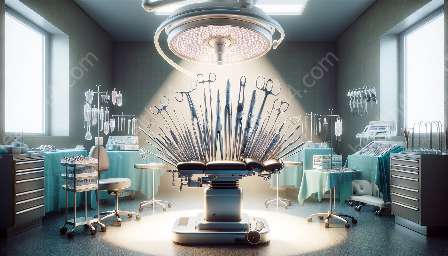As medical technology advances, the field of arthroscopy plays a pivotal role in modern medicine. This in-depth topic cluster explores the world of arthroscopy, its relationship with surgical instruments and medical devices, and its impact on the healthcare industry.
Understanding Arthroscopy
Arthroscopy is a minimally invasive surgical procedure that allows healthcare professionals to diagnose and treat joint problems with the help of a small, flexible instrument called an arthroscope. This innovative approach offers significant advantages over traditional open surgeries, including smaller incisions, faster recovery times, and reduced risk of complications.
The Arthroscope
The arthroscope is a key component of arthroscopic procedures. This slender instrument contains a light source and a camera that enables surgeons to visualize the interior of a joint. By inserting the arthroscope through a small incision, surgeons can accurately diagnose and treat a variety of joint-related issues, such as torn ligaments, inflamed synovium, or damaged cartilage.
Applications of Arthroscopy
Arthroscopy is commonly used to address joint conditions in the knee, shoulder, hip, wrist, ankle, and elbow. The procedure can alleviate pain, restore joint function, and improve the overall quality of life for patients suffering from joint disorders.
Arthroscopy and Surgical Instruments
Effective arthroscopic procedures rely on a wide array of specialized surgical instruments designed to facilitate precise and minimally invasive interventions. These instruments are meticulously crafted to ensure optimal functionality and durability, while supporting the intricate maneuvers required during arthroscopic surgery.
Common Surgical Instruments Used in Arthroscopy
Arthroscopic surgery involves the use of instruments such as probes, graspers, shavers, knives, scissors, and motorized devices. These tools aid surgeons in accessing and manipulating the joint space with precision, while minimizing trauma to the surrounding tissues.
Advancements in Surgical Instrumentation
Continual advancements in surgical instruments have revolutionized arthroscopic procedures, leading to enhanced surgical outcomes and patient satisfaction. Innovations in material science, ergonomics, and imaging technologies have propelled the development of state-of-the-art instruments that empower surgeons to perform complex arthroscopic interventions with greater ease and accuracy.
Arthroscopy and Medical Devices & Equipment
Integration of arthroscopy with modern medical devices and equipment has contributed to the evolution of minimally invasive orthopedic procedures, leading to improved patient care and clinical efficiency.
Diagnostic Imaging and Arthroscopy
Advanced imaging modalities such as magnetic resonance imaging (MRI) and computed tomography (CT) have enhanced the preoperative planning and intraoperative guidance for arthroscopic interventions. These medical devices provide detailed anatomical information, enabling surgeons to navigate the joint space with precision and confidence.
Implants and Arthroscopic Procedures
The use of innovative implants and biologics has expanded the scope of arthroscopic treatment options, allowing for tissue repair, reconstruction, and regeneration within the joint environment. These medical devices complement arthroscopic techniques by providing durable solutions for joint pathologies.
Robotics in Arthroscopic Surgery
Robotic-assisted arthroscopy has emerged as a cutting-edge approach, offering enhanced dexterity and accuracy during surgical maneuvers. Robotic systems integrated with arthroscopic instruments enable surgeons to perform intricate tasks with heightened precision, potentially improving patient outcomes and recovery.
Conclusion
Arthroscopy, surgical instruments, and medical devices stand at the forefront of innovation in orthopedic surgery, offering patients the benefits of minimally invasive interventions, accelerated recovery, and improved clinical outcomes. The interconnected nature of these domains underscores the importance of ongoing collaboration and advancements to further elevate the standard of care in arthroscopic procedures.


